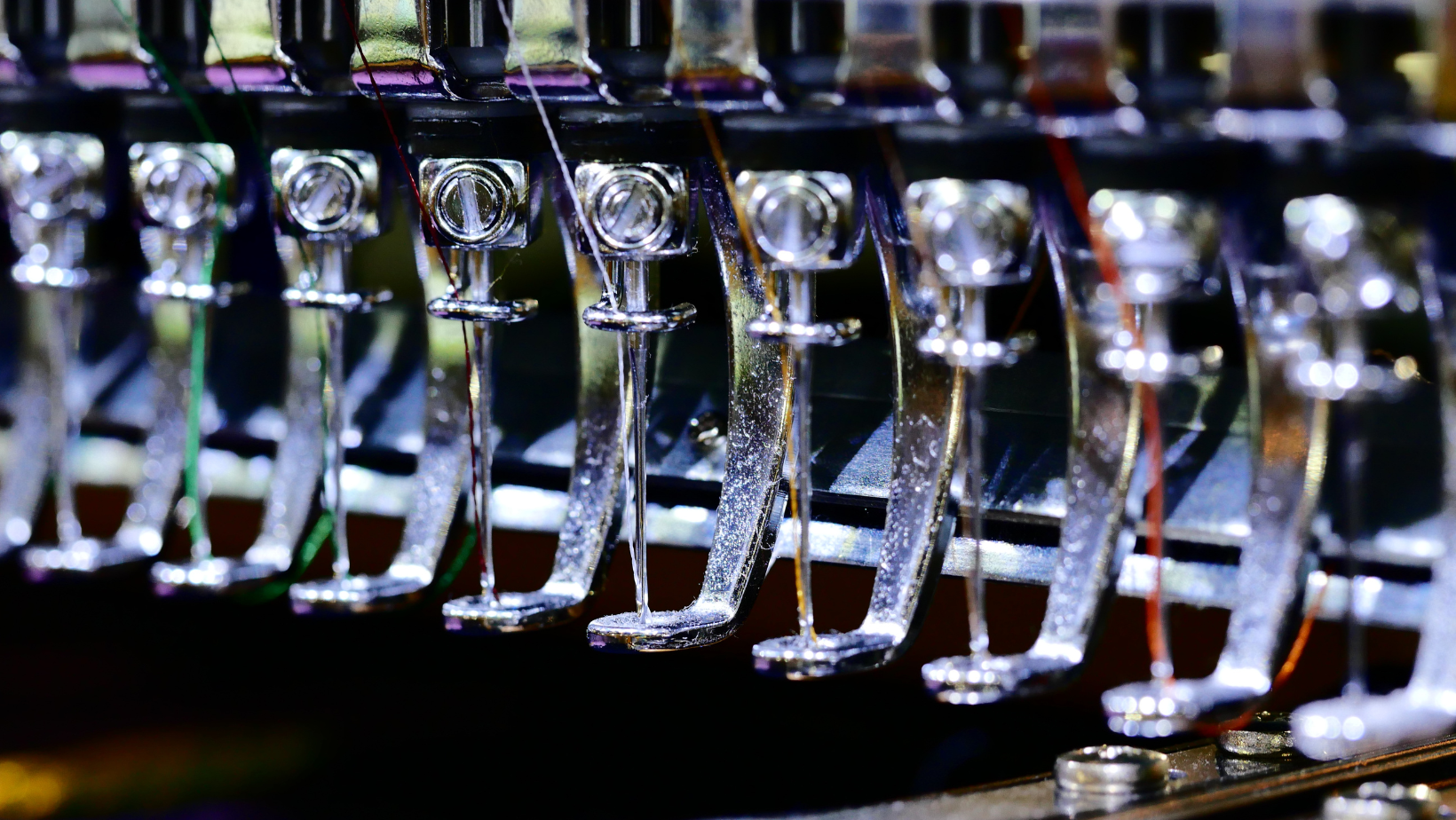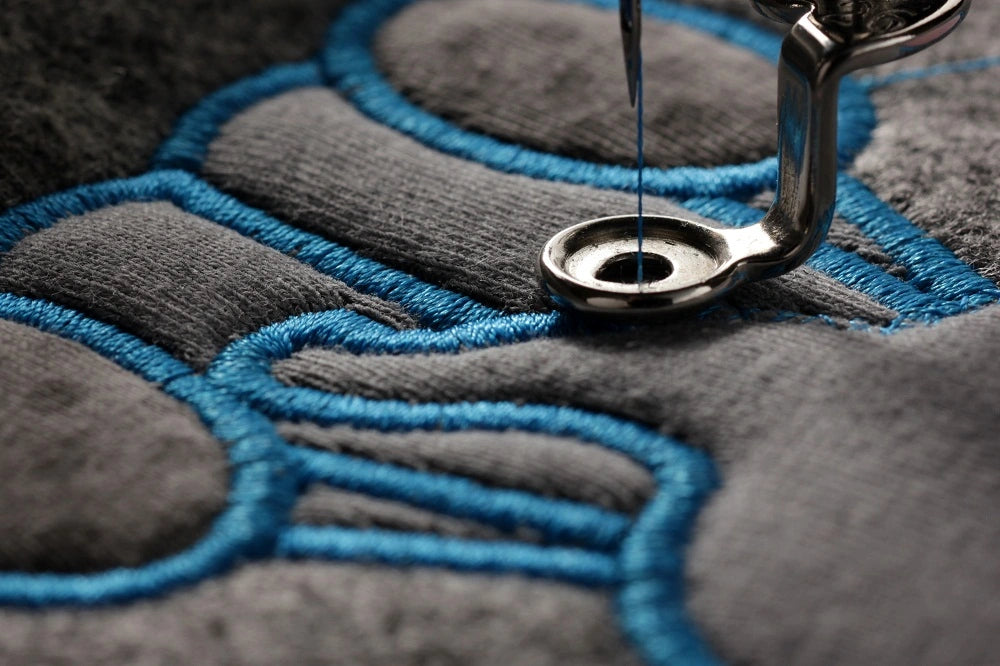
Custom Embroidery
Custom embroidery stands as our most favoured embellishment method. Our embroidery machines are directed by unique .DST files, meticulously weaving threads through clothing to bring intricate designs to fruition. This detailed process crafts your design thread by thread, gradually bringing it to life with each pass.The outcome of embroidery yields a superior quality finish, enabling your organization to distinctly stand out. The meticulous craftsmanship ensures a high-quality, eye-catching result that sets your brand apart.

Embroidery Benefits
Utilizing embroidery is an excellent method for enhancing garments, providing them with a superior and enduring finish.
The art of embroidery imparts a distinguished and high-quality appearance.
Embroidery lends a polished finish to your logo, particularly suitable for organizations that uphold standards of excellence and quality. The results are not only aesthetically pleasing but also resilient.
In contrast to screen printing, embroidery intricately weaves a design into the fabric using threads, ensuring longevity. Our threads exhibit remarkable color retention, enduring countless wash cycles.
Embroidery is versatile, working seamlessly on an extensive range of garments. Unlike certain printing techniques, there are no constraints on the placement of your logo – whether it's at the center of a seam or on various fabric types, embroidery offers flexibility and adaptability.
Limitations of Custom Embroidery
Embroidery stands out as a fantastic method for imprinting your product, but its characteristics may not accommodate certain preferences, making alternative printing methods more suitable.
Embroidering Gradients:
Achieving gradients through embroidery poses challenges due to the intricate nature of this technique. The process demands frequent thread changes to simulate color transitions, making it impractical. Sublimation or DFT (Direct-to-Fabric) methods are better suited for achieving seamless gradient effects. However, if abrupt color shifts are acceptable, embroidery gradients can be considered.
Number of Unique Colors:
Embroidery is limited to incorporating up to 12 colors, imposing a strict constraint on intricate designs with a broad color spectrum.
Embroidering Small Details:
The complexity of small details in designs or text might not translate effectively through embroidery. Screen printing is a recommended alternative for intricate details that cannot be enlarged.
Cost of Large Designs:
Embroidery costs escalate with the size of the logo due to the increased time required for embroidery. For cost-effective options without compromising size, opting for screen printing is advisable.
Effect on Waterproof Garments:
Embroidery might compromise the waterproof properties of jackets. For higher-end jackets, employing DFT or screen printing methods preserves the fabric's integrity while accommodating logo application.
In essence, while embroidery offers distinct advantages, considering the limitations and suitability for specific designs or garment types is crucial. Exploring alternative printing methods ensures optimal results aligned with your preferences and requirements.
Embroidery Care Instructions
Embroidered logos endure well over time, yet a few guidelines can extend their lifespan even further.
Washing Instructions: Turn the garment inside out before washing. Avoid washing it with items featuring zippers or sharp elements as they might snag on the threads, potentially damaging your logo.
Drying Recommendations: If feasible, opt for air-drying to prevent potential shrinkage. Shrinkage around the embroidered area can cause wrinkles on the logo.
Ironing: Refrain from ironing the embroidered logo directly. Instead, turn the garment inside out before ironing. Avoid using steam features as well, as they can affect the embroidery.